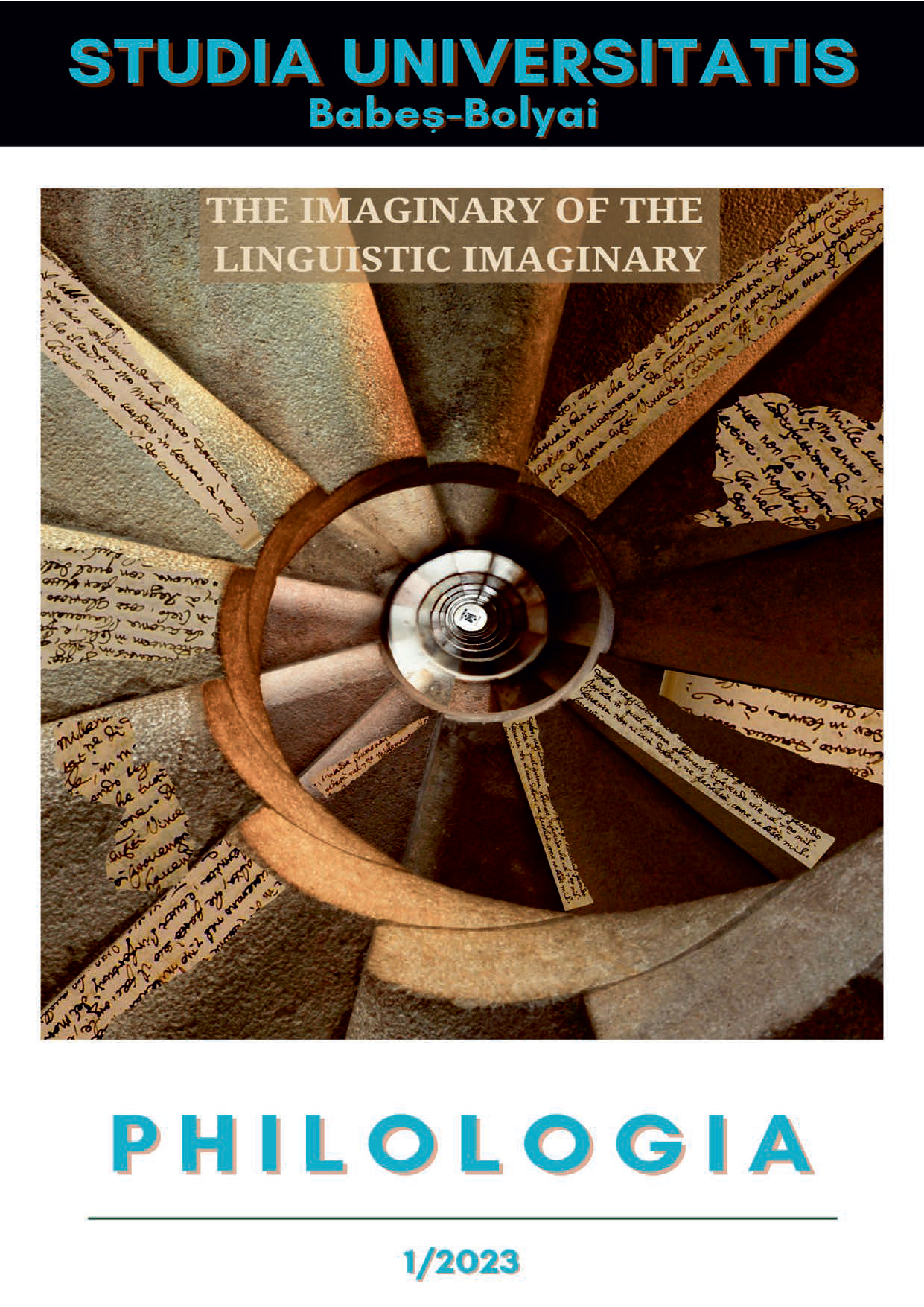THE LEGITIMIZING TOOLKIT OF THE ROMANIAN COMMUNIST ANTHEMS. IDEOLOGY AND LINGUISTIC IMAGINARY
DOI:
https://doi.org/10.24193/subbphilo.2023.1.09Keywords:
national imaginary, identity legitimation, mythemes, anthems, homeland, ritual, communism, wooden languageAbstract
The Legitimizing Toolkit of the Romanian Communist Anthems. Ideology and Linguistic Imaginary. Anthems are associated with nationhood and are part of its legitimizing toolkit. Their complete interpretation usually goes through the analysis of the linguistic imaginary, namely of the mythemes of the age, of the unconscious representations of the community, identifiable in rhythmical patriotic verses. National myths, recycled in patriotic songs Romanians have created since the 19th century, have been coloured differently, according to the ideology of the era. However, during 1948-1989 a double orientation could be “read” in the three national anthems: the natural insinuation of the community’s unconscious projections on the one hand, and the evidence of ideological charge meant to change Romanians’ representations of national reality on the other. Thus, the anthems Broken Shackles (Zdrobite cătușe), We Glorify Thee, Romania (Te slăvim, Românie), and Three colours (Trei culori) mark different stages in the communist discourse, even if they seemingly reuse the same motifs specific to the imaginary of the time: the country, the flag, the proletariat, the victorious past, the bright future and the “crushed” enemies.
REZUMAT. Instrumentarul legitimator al imnurilor comuniste românești. Ideologie și imaginar lingvistic. Imnurile se asociază cu națiunea și fac parte din instrumentarul ei legitimator. Interpretarea completă a acestor creații trece, de obicei, prin analiza imaginarului lingvistic, respectiv a mitemelor epocii, a reprezentărilor inconștiente ale comunității, identificabile în versurile patriotice ritmate. Miturile naționale, reciclate în cântecele patriotice pe care le-au creat românii începând cu secolul al XIX-lea, au fost colorate diferit, în funcție de ideologia epocii. În perioada 1948-1989, în cele trei imnuri naționale, poate fi „citită” însă o dublă orientare: insinuarea firească a proiecțiilor inconștiente ale comunității, pe de o parte, și evidența încărcăturii ideologice, menite să schimbe reprezentările românilor despre realitatea națională, pe de altă parte. Așadar, imnurile Zdrobite cătușe, Te slăvim, Românie și Trei culori marchează etape diferite ale discursului comunist, chiar dacă aparent reiau aceleași motive specifice imaginarului vremii: patria, drapelul, proletariatul, trecutul victorios, viitorul luminos și dușmanii „zdrobiți”. Explorarea imaginarului lingvistic pune în evidență modificările încărcăturii semantice și simbolice, de la un imn la altul.
Cuvinte-cheie: imaginar național, legitimare identitară, miteme, imnuri, patrie, ritual, comunism, limbă de lemn
Article history: Received 5 December 2022; Revised 10 February 2023; Accepted 24 February 2023; Available online 27 March 2023; Available print 31 March 2023
References
Anderson, Benedict. 1983. Imagined communities. Reflections on the Origin and Spread of Nationalism. London: Verso.
Boia, Lucian. 1997. Istorie și mit în conștiința românească. Bucureşti: Humanitas.
Boia, Lucian. 1999. Două secole de mitologie națională. București: Humanitas.
Csepeli, György, Örkeny, Antal. 1998. “The Imagery of National Anthems in Europe”. Nation, Ethnicity, Minority and Border. Contributions to an international sociology, edited by Alberto Gasparini. Gorizia: Istituto di Sociologia Internazionale di Gorizia (I.S.I.G.): 37-56.
Durand, Gilbert. 2004. Introducere în mitodologie. Mituri și societăți. Cluj-Napoca: Dacia.
Kelen, Christopher. 2015. Anthem Quality. National Songs: A Theoretical Survey. Bristol/Chicago: Intellect LTD.
Lauenstein, Oliver, Murer, Jeffrey S., Boos Margarete and Reicher, Stephen. 2015. «“Oh motherland I pledge to thee…”: a study into nationalism, gender and the representation of an imagined family within national anthems». Nations and Nationalism, 21 (2): 309–329.
Muñoz-Galiano, Inés María, González García, Erika, Beas Miranda, Miguel and Cívico Ariza, Andrea. 2022. “The Educational Role of European National Anthems in the Development of Ethnic Nationalism”. Novum Jus, vol. 16:157-186.
Negrici, Eugen (ed.), Poezia unei religii politice. Patru decenii de agitație și propagandă. București: Pro.
Pavković, Aleksandar and Kelen, Christopher. 2016. Anthems and the making of Nations-States. Identity and Nationalism in the Balkans. London, New York: I.B. Tauris & Co. LTD.
Perreault, Stéphane, Falardeau, Marie-Chantal and Guèvremont, Jeanne. 2018. «Au nom de la relation: le cas des hymnes nationaux». Théologiques, 26 (1): 83–103.
Platon, Elena. 2020. „Patrimoniu și imaginar lingvistic” in Enciclopedia imaginariilor din România. Coordonator general: Corin Braga, vol. II. Patrimoniu și imaginar lingvistic. Iași: Polirom.
Thom, Françoise. 1987. La Langue de bois. Paris: Juillard.
Vasile, Cristian. 2016. Un poet politic: Ceauşescu și Imnul din 1977. Apostrof, XXVII/10(317): 57-68, http://www.revista-apostrof.ro/arhiva/an2016/n10/a12/.
Zafiu, Rodica. 2007. Limbaj și politică. București: Editura Universității din București.
Downloads
Published
How to Cite
Issue
Section
License
Copyright (c) 2023 Studia Universitatis Babeș-Bolyai Philologia

This work is licensed under a Creative Commons Attribution-NonCommercial-NoDerivatives 4.0 International License.





 ©Studia Universitatis Babeş-Bolyai Philologia. Published by Babeș-Bolyai University.
©Studia Universitatis Babeş-Bolyai Philologia. Published by Babeș-Bolyai University.